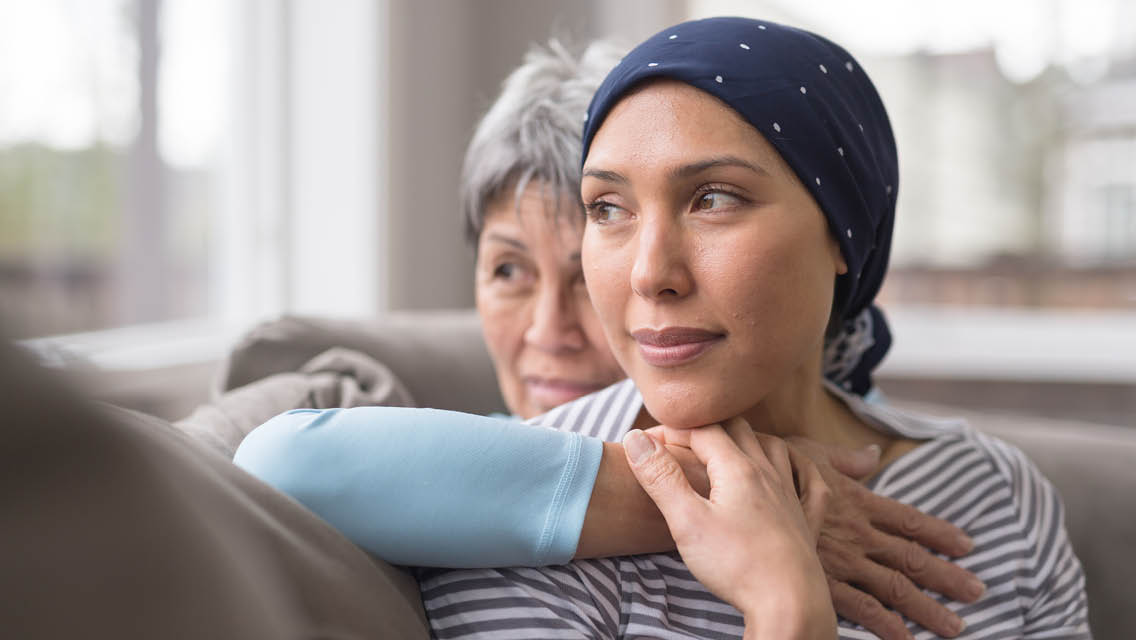|
Listen to this article:
|
It’s a scene that was described on front pages and among families during the early months of the COVID-19 pandemic: A patient in intensive care, struggling to breathe, placed on a ventilator and fighting for life. For many of those fortunate enough to survive, the trauma of this harrowing experience lingered long after they started breathing on their own again.
Whether it’s something as minor as a needle jab or as profound as major surgery, medical intervention is a universal aspect of life. But it’s what happens afterward that, for many of us, can cast a cloud over our future sense of well-being.
The term “medical trauma” describes a range of emotional and physical responses that follow medical experiences, often including sensations of pain, fear, and helplessness. This reaction is usually acute and develops in the immediate aftermath of treatment, though it may manifest months or years later.
For some, this might involve a relatively mild aversion to doctors’ offices or medical procedures. For others, the effects can progress into posttraumatic stress disorder (PTSD), anxiety, or depression.
Understanding the nature of this trauma requires that we identify the specific experiences that triggered it. “There has been research on patients’ fears. Of the two biggest ones, No. 1 is depersonalization and No. 2 is a loss of control,” says Jan Chozen Bays, MD, author of Mindful Medicine: 40 Simple Practices to Help Healthcare Professionals Heal Burnout and Reconnect to Purpose.
Common symptoms of medical trauma include intrusive thoughts, memories, and nightmares; fearfulness and heightened anxiety; and avoidance of stimuli that might trigger memories of the event. In many cases, medical trauma builds on previous traumatic medical experiences.
“Many clients that I see for this kind of trauma work have residual trauma from childhood medical experiences,” says psychologist Maureen Campion, MS, LP, author of Heal Your Birth Story: Releasing the Unexpected. “This can be a huge trigger, because suddenly they’re in the hands of medical professionals again, which can create a feeling of being very trapped.”
Specific and Widespread Trauma
An estimated one-third of adults experiencing severe injury show signs of PTSD, along with about 20 to 30 percent of those who have been treated in intensive-care units. An estimated 12 to 25 percent of people who survive major medical events, such as heart attacks, strokes, and cancer, also show signs of PTSD.
Today’s healthcare environment often features brief doctor’s visits and practitioners stressed by ever-increasing workloads. This can leave patients — as well as those who treat them — feeling like cogs in a machine. That kind of depersonalization can contribute to a sense of loss of control, particularly among populations who have experienced historical or systemic trauma outside the medical setting.
“Traumas are cumulative, especially for people who have a historic, personal, or even cultural relationship to trauma, such as people of color and immigrant families,” adds Campion. “They are dealing with traumas that have been handed down through generations.”
Steps Toward Healing
There may be unavoidable repercussions from major medical events, but lasting traumatic stress doesn’t have to be a fixture in your emotional landscape. Move forward with the following steps.
1) Recognize the reality.
Before casting an eye toward future well-being, acknowledge the intensity of your experience. “People will tell you that you’re lucky to be alive, or it was all for the best, or whatever platitude we can throw out there,” Campion says. “Yes, I’m lucky to be alive — but there’s also more to it than that. I was terrified. I had horrible things happen to me. I’m still experiencing pain.” (For advice on dealing with toxic positivity, see “The Downside of Optimism.”)
2) Notice the effects.
Because the original cause of medical trauma may be a rare event, you might dismiss its ongoing emotional impact. It’s not every day, after all, that someone gives birth or undergoes surgery, which can make it easier to deny there’s anything wrong even as our sleep is restless and our anxiety levels are spiking.
3) Talk about it.
“One thing that helps is a narrative approach,” says Campion. “It’s about telling your story in order to make sense of it.” The goal is to place the memory fully in the past.
If you’re dealing with PTSD or systemic trauma, you’ll want to find a therapist who can support you. If you’re not ready for that step, you might prefer to confide in a trusted friend. Either approach can remind you that you’re not alone, which can help you process what happened.
“It’s like the feeling of almost being in a car crash,” Campion adds. “We go home and tell somebody, ‘I almost died!’ Human beings know how to process that: We need to share it with someone. We need to have it recognized, and that can help keep us from playing it over and over in our heads.”
4) Try other therapeutic approaches.
Deep breathing exercises can calm anxiety. Movement, such as shaking and dancing, as well as activities like walking, can also ease traumatic stress. And mindfulness practices can help us process traumatic events.
“One effective exercise centers around gratitude for the body and all its sensations,” says Chozen Bays. “When something goes wrong with the body, we tend to have negative feelings toward it. We can turn our attention, for instance, to a part of the body that isn’t functioning well and say thank you to it. Sometimes people cry, because they realize how this body part has been working as hard as it can, against the odds, to try [to] take care of them.”
Campion also uses mindfulness in her practice to help her clients prepare for what may be a traumatic experience. “I use meditation a lot in preparing for birth and other hospital procedures,” she says. “It’s not going to protect against everything, but it can keep your reactivity down.” (For more ways to find calm, see “Beyond Meditation.”)
5) Build out your healthcare team.
Traumatic medical experiences can also be mitigated, in some cases, by building better relationships in healthcare settings. People can ease their concerns by advocating for themselves, asking for detailed explanations, expressing fears, and creating stronger, more-human connections with providers.
You might find that you want to expand your healthcare team to include another type of practitioner — like a bodyworker or an acupuncturist — who can offer you a more sustained interaction and hands-on support.
You might also consider working with a patient advocate: someone you trust to communicate with healthcare professionals when you can’t advocate for yourself. (For more advice on getting the support you need from your healthcare experience, see “The Empowered Patient.“)
6) Find compassion.
Another constructive practice is cultivating care for oneself and turning it outward. “We can open our awareness to all the people in the world having the same difficulty,” says Chozen Bays. “That widens your awareness to feel compassion for everybody, including yourself.”
A compassionate viewpoint can also reduce feelings of helplessness by encouraging you to seek connection. While no single approach is a cure-all for the serious reality of medical trauma or PTSD, how we frame our experience and how we relate to others can help us heal in body, mind, and spirit.
Balance
Explore more empowering strategies to support your efforts to live in (closer) alignment with your values at our Balance department.
This article originally appeared as “Urgent Care” in the June 2023 issue of Experience Life.





This Post Has 0 Comments